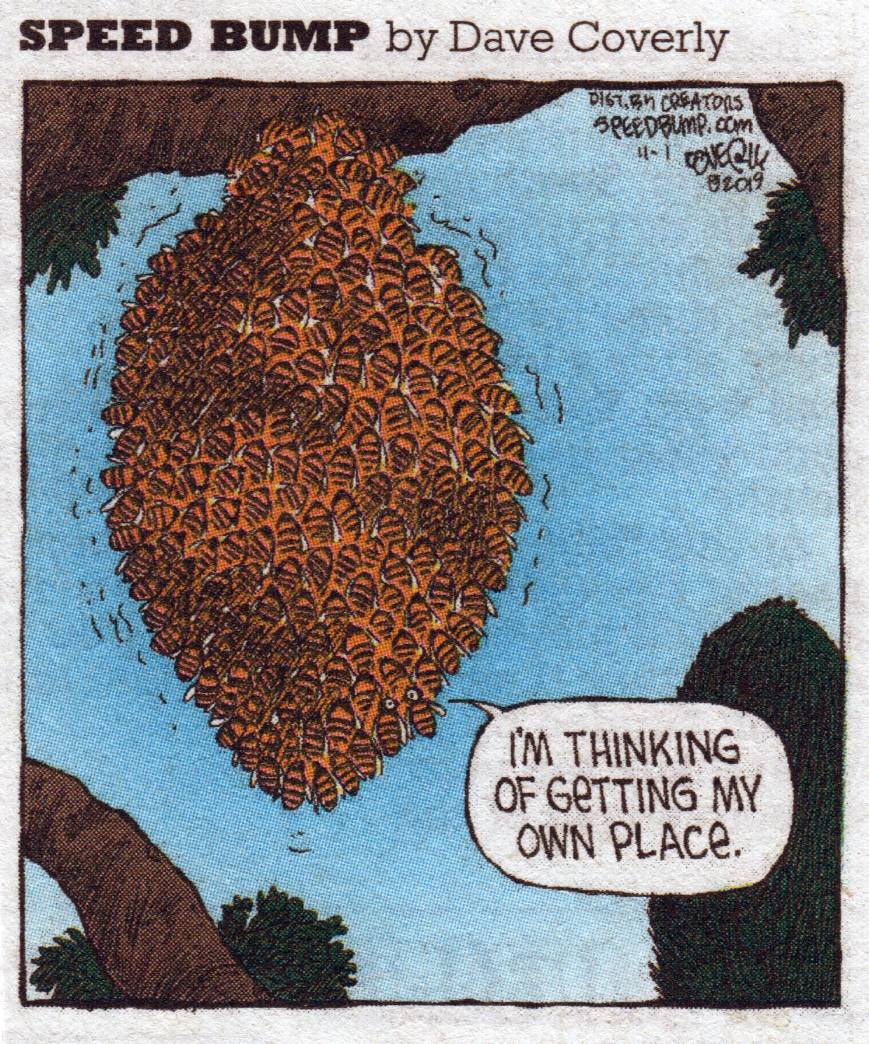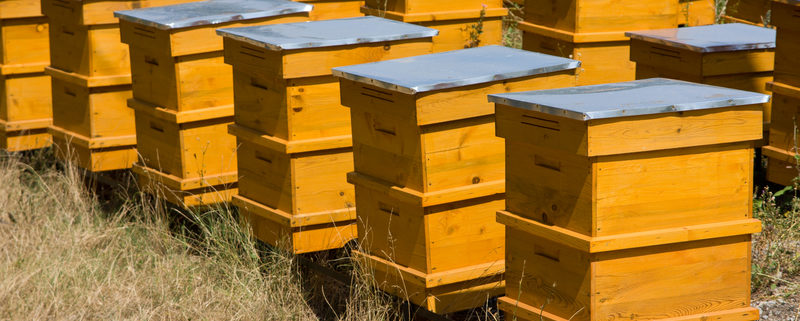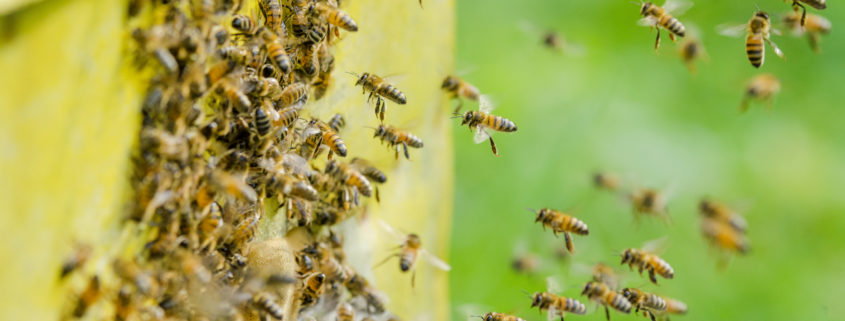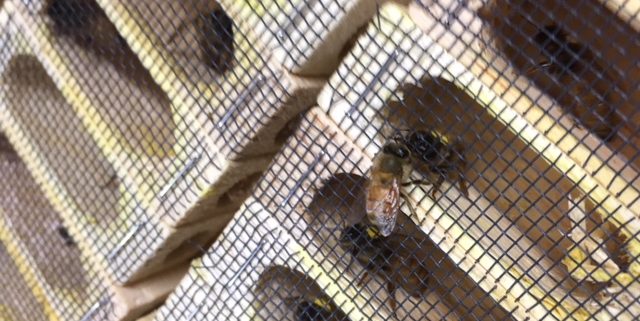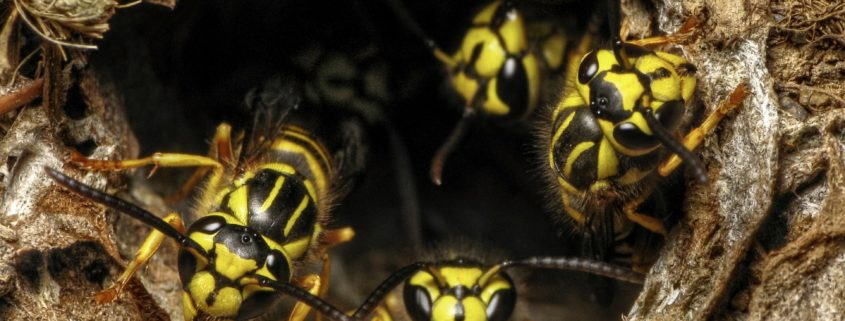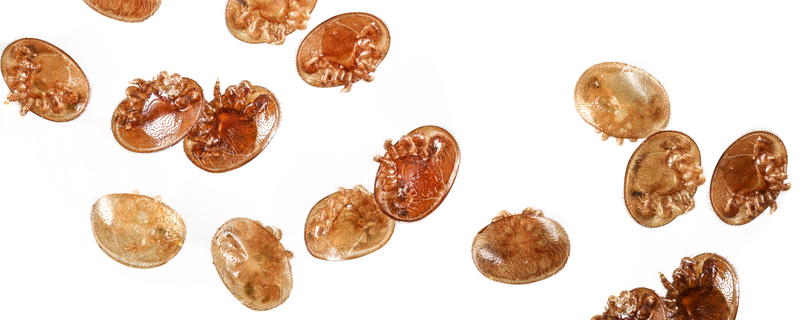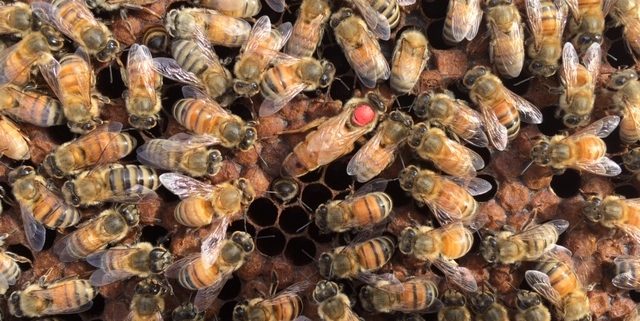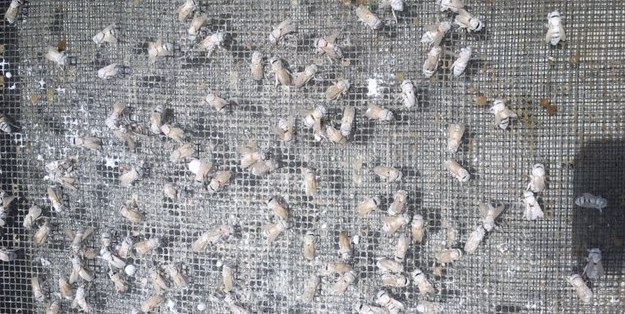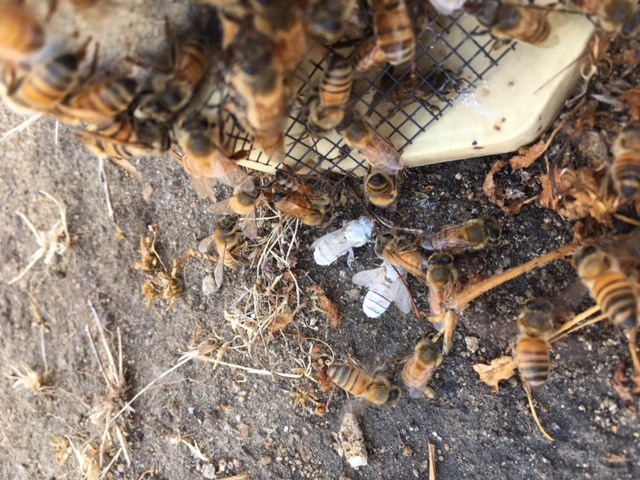How a Swarm Finds a New Home
 Besides the many obvious reasons not to leave your dresser sitting outdoors is one that you may not have considered: Bees like dressers too!
Besides the many obvious reasons not to leave your dresser sitting outdoors is one that you may not have considered: Bees like dressers too!
A friend of Wildflower Meadows’ manages a nature reserve, which happens to include some lightly used houses. One day our friend found a swarm in one of the drawers of a dresser that, for some unknown reason, had been left outside. A swarm of bees had entered the third drawer through the rear of the dresser and began constructing comb right inside the drawer. This is something like a natural top bar hive, only with a bit more creativity on the bees’ part.
When a swarm of bees begins its journey from the original hive, it typically first travels a relatively short distance before stopping to perch in a temporary resting area, such as a tree branch. From this staging area, the swarm sends out scouts to evaluate new possibilities for a more permanent home. The scouts, who are the hive’s experienced foragers, travel approximately a mile or so from the resting area. They explore their surroundings both near and far, much in the same way as they have done in the past when scouting for nectar and pollen. In a swarming situation, however, the scouts are not searching for food for the collective, but rather shelter for the collective.
This scouting needs to be executed as quickly and efficiently has possible. Afterall, the swarm is vulnerable when sitting out in the open. The bees cannot transport food with them for their swarming journey; they can only carry whatever food stores they can in their bellies, and that food won’t last for long. Plus, when sitting on a tree branch or the side of a building, the bees have no decent shelter from the elements. And, although their precious queen is sheltered in the middle of the swarm, she is completely unable to perform her egg laying duties without any honeycomb available.
This all means that the scouts need to spring into action right away. They survey their surroundings looking for shelter, and return to the swarm with their findings. Much in the same way that foragers communicate the location of desirable nectar sources, the swarm scouts communicate the location of favorable housing locations to the other bees by performing the “waggle dance.” The better the housing prospect, the more intensely the bees will perform the dance. The scout bees then recruit other bees to check out the prospective new homes. Once approximately 80% of the bees in the swarm have concurred that a location is suitable, a consensus is reached. The swarm then makes its move and will begin to populate their new home.
It’s fairly easy to see why an abandoned dresser might make an attractive home for a swarm. A dresser is stable, cavernous, and made of natural wood. Plus, the drawers are reasonably well-protected from the elements. For the human (former) owner of this dresser, however, not so good. Good luck to this poor person reaching for a pair of socks, particularly in the third drawer!

